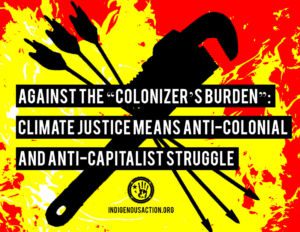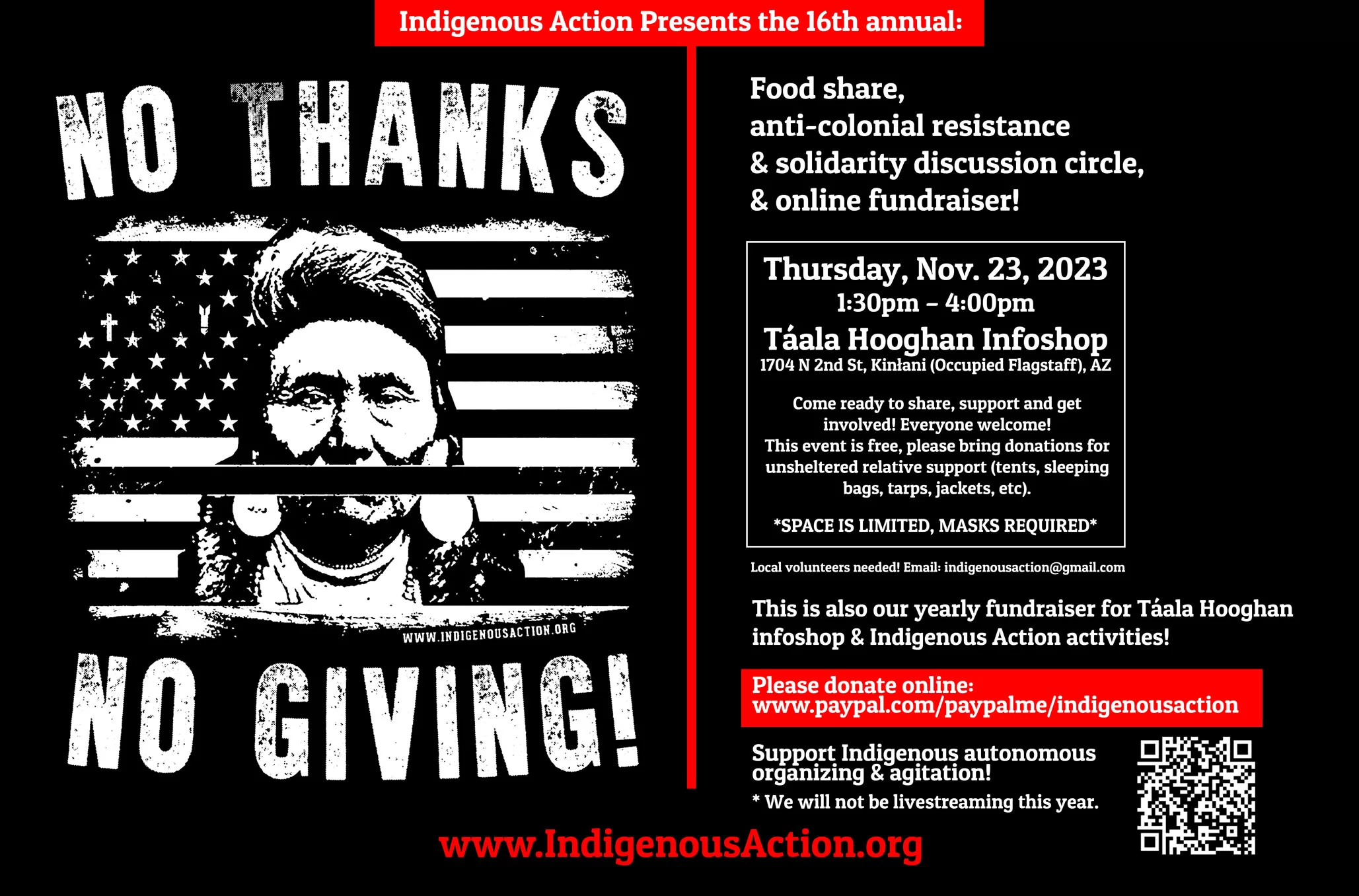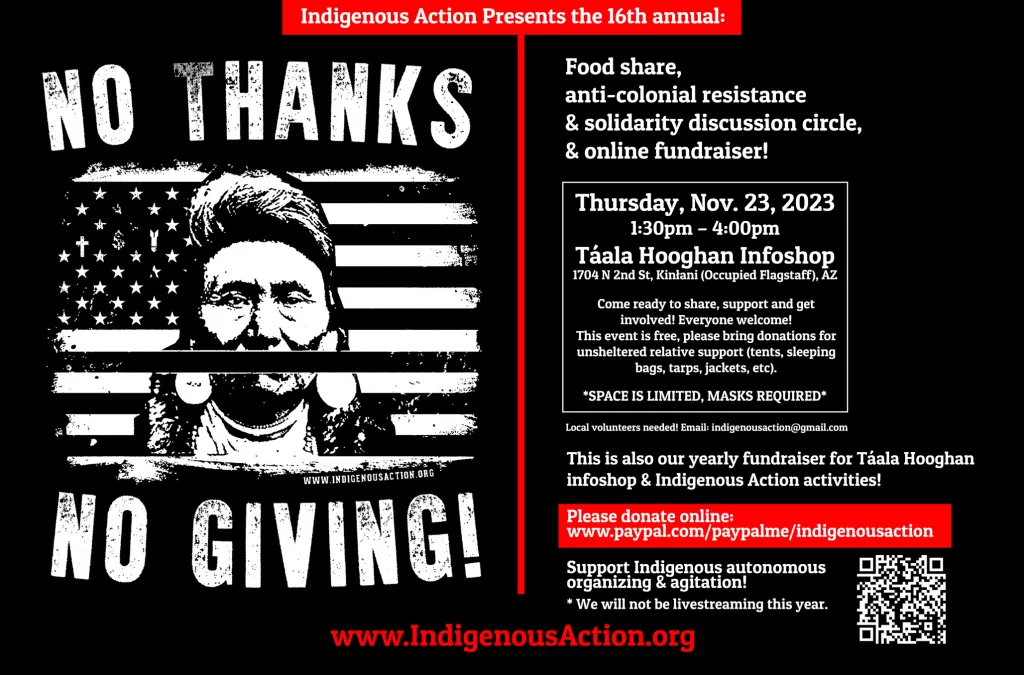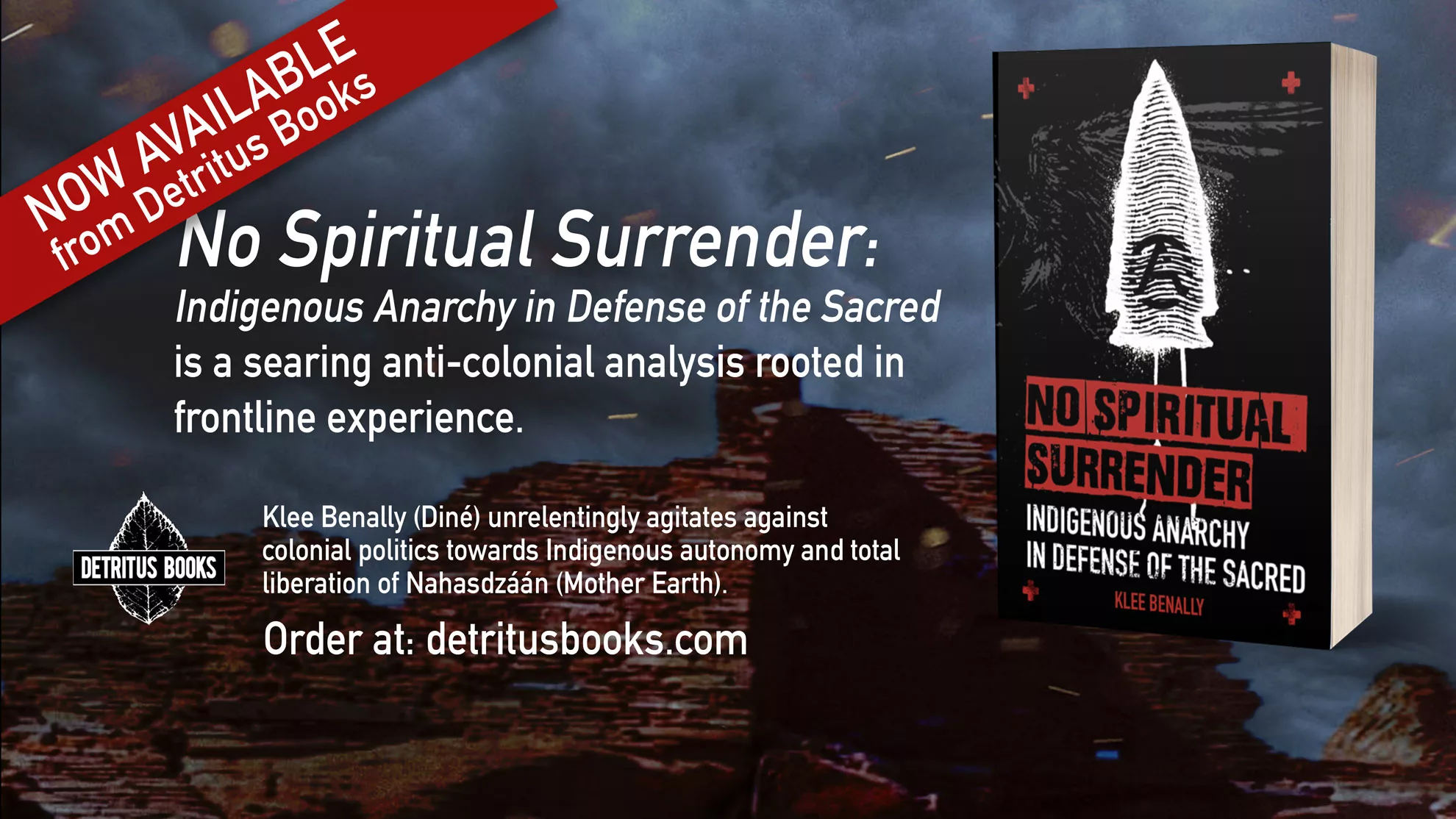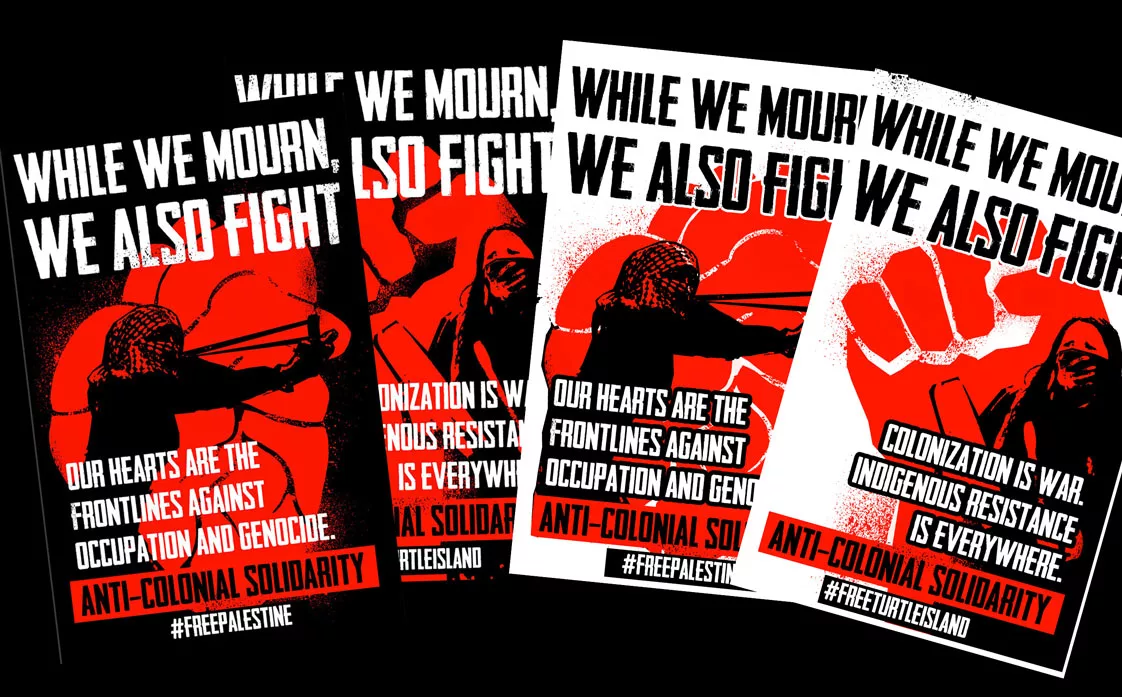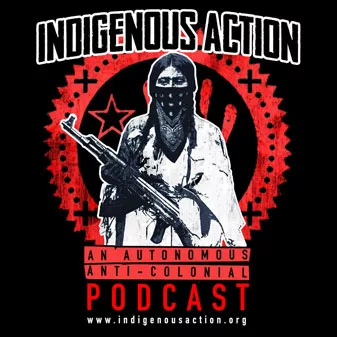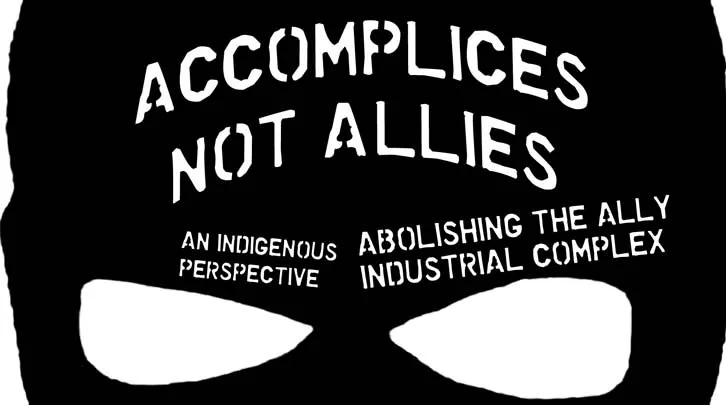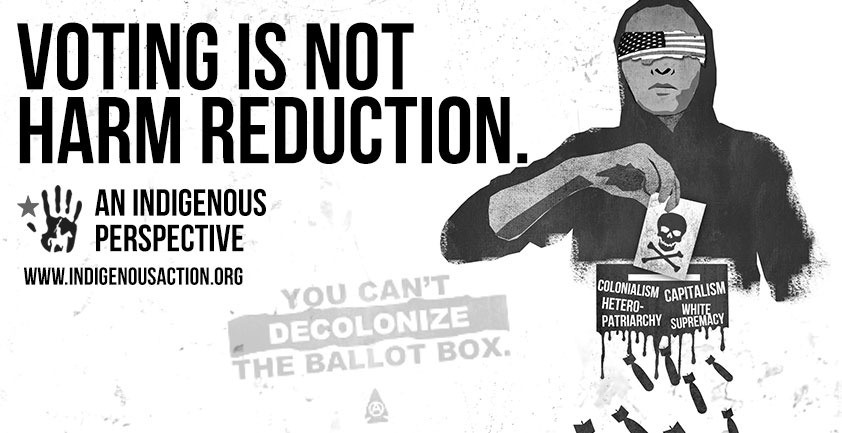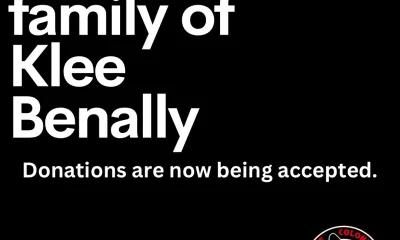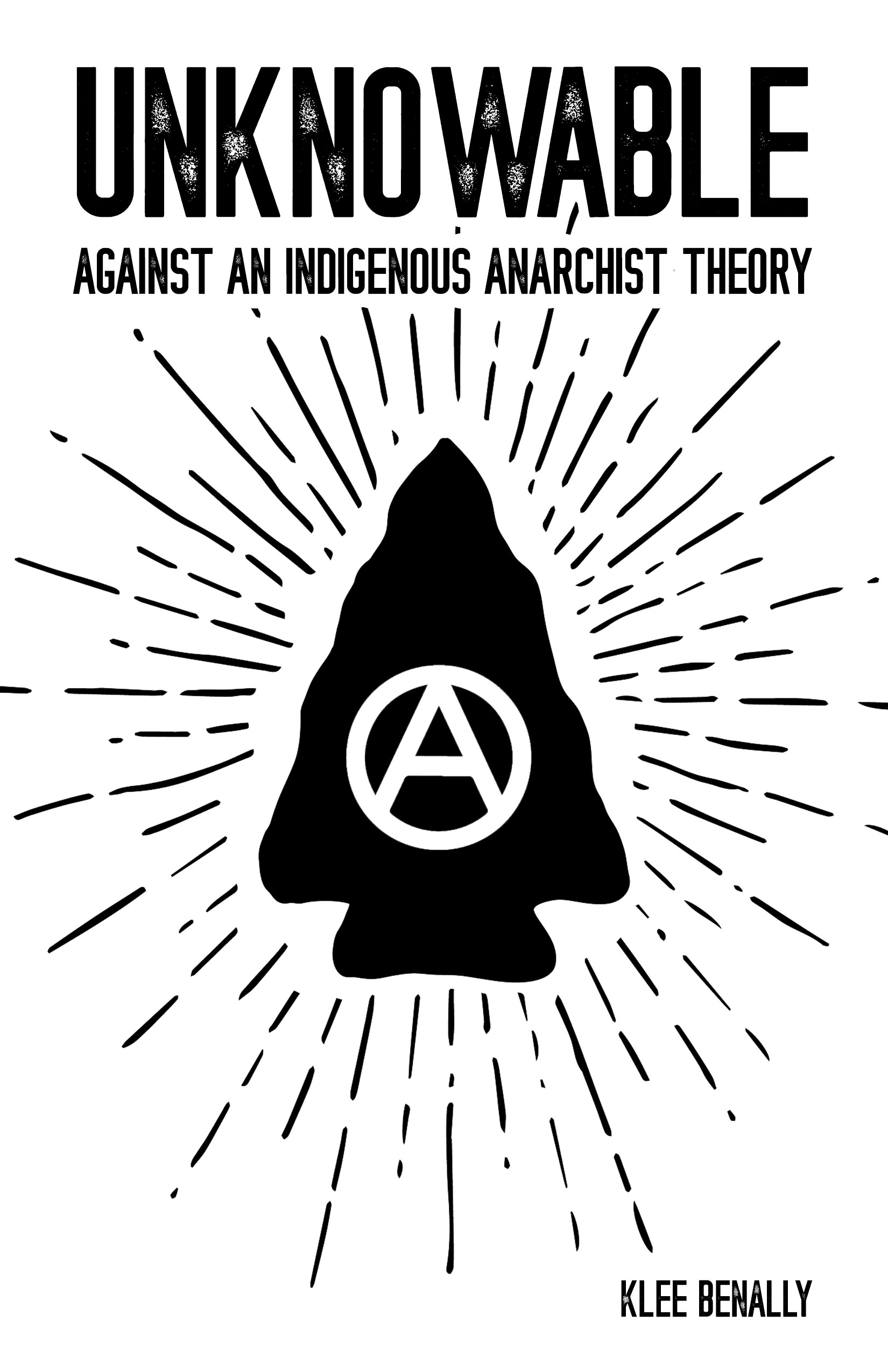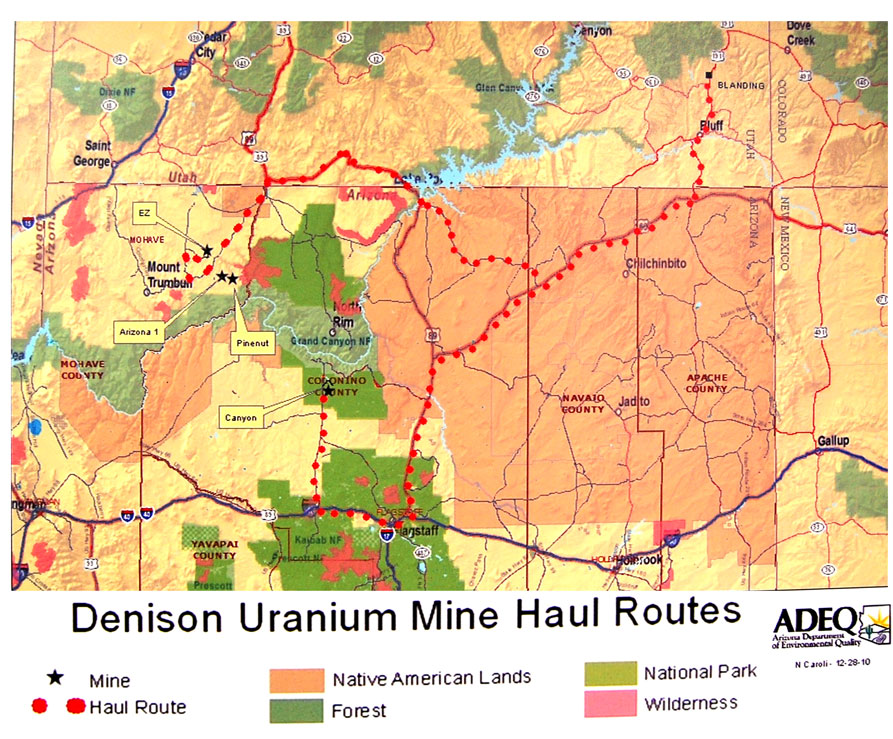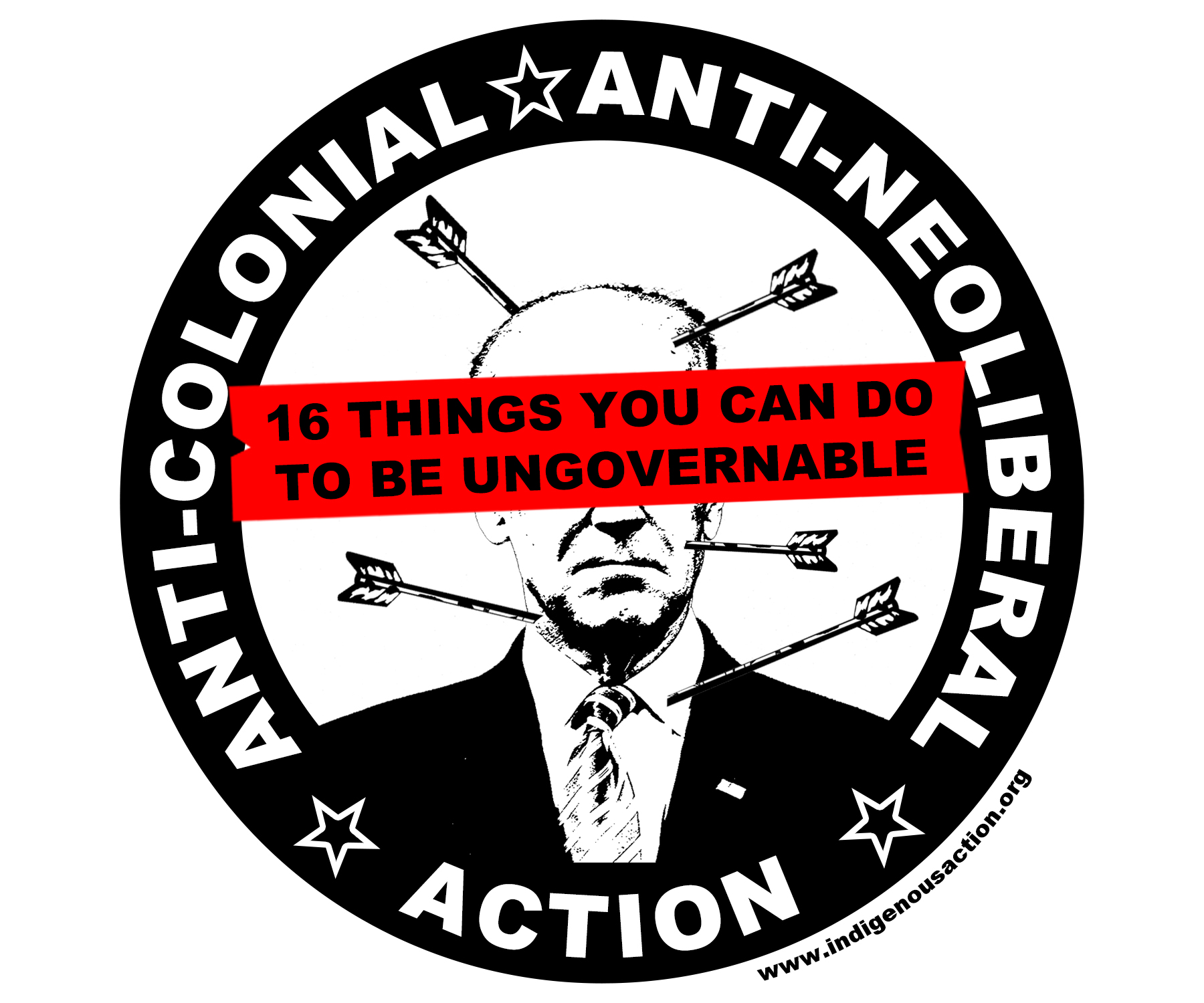Indigenous Action, Fall 2021
Global warming is a direct consequence of war against Mother Earth.
Unless the root ideologies and structures that precipitate this crisis are confronted and done away with, we condemn ourselves and future generations to non-existence.
”Big Green” non-profit corporations and so-called non-governmental organizations (even the Indigenous ones) have set the terms for dissent and triage of this crisis in such a way, that through the claims of foresightedness where we can supposedly see a better future ahead of us, manifest as a shallow and short lived mirage blowing back at us the inevitable ends of our own extinction, or an existence in a desolate and decimated hellscape, what else can be expected from a series of cookie cutter tactics that keep us marching in circles?
In contrast to the genuinely lethal, even existential crisis that the whole of the earth and the species who depend and reside upon it face, the current tactics of Non-Violent Civil Disobedience fail precisely because those who employ it consistently misunderstand the urgency of catastrophe on the horizon and embrace the safety of a positional, tactical, analytical, strategic and structural half measure as “protest”, that materially manifests itself as a decorated acquiescence in the form of continually more symbolic protests and adventures in the comfort zone politics of a march toward catharsis, as if that will stop glaciers from melting and entire species from going extinct. This failed posturing of so-called “protection”, “preservation” and accumulation of “political power” (lobbying) instead serves to reinforce the State and its monopoly violences more than challenge them. One can only assume a psychology behind this is one of creative exhaustion and conceptual blindness or more simply a reticence that is the fear of being labelled “alarmist” or “too radical.” While nearly the whole of the Neo-Liberal Environmental Movement for Climate Justice (and have no doubt it is “NeoLiberal” or does Green Capitalism and Green economics mean something else?), has been sounding the alarms for the absolute necessity of radical change. In our case, as Indigenous People, we’ve been sounding it out since before Columbus, to one another, and to the settler invaders when we reminded them that you can’t eat money.
The Climate Justice Movement’s tactics are limited in that they all are expressed fundamentally as some form of aggressive lobbying (on National and International levels). But we can’t expect much more when they wield strategies that rest on damage control through political and economic reforms to the very people, forces, powers, interests and institutions that created this crisis in the first place. Although the appearances of systemic issues like capitalism and colonialism may be addressed in press releases and written across banners on the streets, the underlying strategic aims rest on the reconfiguration of the dominant social order towards a more ecologically oriented environmentally conscious nation state, against the totalizing all encompassing force that is Capitalist Colonialism and Imperialism.
“Just transition” is a strategy of economic redemption to further preserve ways of being that are unsustainable by design, you can’t Lobby away Colonialism and Capitalism, no matter how hard you try.
The “Green New Deal”, like its parent “Green Economics” are meant to sustain the U.S. settler colonial project and the capitalist relations whose interest lay within the specificity of continuing the ongoing “exploitation” (destruction) of the whole of the Earth, while cashing in of course. In the case of The Green New Deal, which in many ways begat its own child, that of the Red New Deal, who aside from outright plagiarizing, fronting, and co-opting longterm Indigenous Climate Justice work, the Red Nation’s “Red New Deal,” proposes an anti-capitalist and woefully limited anti-colonial response that not only reinforces industrialization but ultimately leads to the ongoing participation in Capitalism proper, just “renamed” and “reformed” under a “transitional” Socialist Rubric, that leads to their Marxist organization’s propositions for a “decolonized” authoritarian worker-run state as the best solution. So while we’re collectively dying from the air we can’t breathe, the water we can’t drink, or both priced out of accessibility in the here and now we are meant to await the building of yet another Socialist Utopia. A utopia built upon the current dystopia of growing wastelands and climate disasters on every continent.
From deadly nuclear power to lithium and rare earth mineral mining, and the privatization of water, the greening of any economy is still a war against Mother Earth and all existence. But yeah, sure “we can transition program” our way out of it, you can’t. This isn’t a solution, this isn’t even intervention, let alone interdiction in or upon Global Disaster Capitalism, this is group fantasythink. It is accelerated death by suicide.
We don’t want an ecologically friendly settler colonial State, we seek to abolish its very existence.
The forefront of Indigenous Climate justice groups proselytize a narrative of their own victimhood, in terms that increase funding streams to their non-profit corporations to pay their bloated salaries and climate action protest-cations aka PR stunts with a legal team on retainer. All while they compete for the spotlight and rally with celebrities to build organizational recognition, and a homogeneity of popular purpose, not to mention a standardization of rote tactical and strategic stagnation.
The assertion that we protect 80% of the world’s biosphere has become a twist on the colonial idea of the “White man’s burden,” but here it is merely shifted to “the burden of the colonized.” This is the twisted colonial logic of climate activism: to reduce our ways of being and complex ongoing struggles to campaign talking points, only to prove we deserve “a seat at the table”, it’s “Change” through arithmetic by way of better self marketing, branding and advertising. Through ceremony, and a myriad of tactically dynamic direct actions we protect all of existence – not just percentages. Our power is not to be found at the colonizer’s table, it is to be found and rekindled in its well fed flames.
By calculating that Indigenous resistance to 20 fossil fuel projects has “stopped or delayed” carbon emissions equivalent to approximately 25% of U$ and KKKanada’s annual overall emissions, climate activists reveal the power of direct action, yet they also assign their campaigns more credit than is due. Particularly by citing significant losses such as DAPL and Line 3 projects in their reports, this statistic tends towards a deluded climate optimism that we view as a path fraught with peril and death. If we’re not being honest with and about the failings of our movements, what does shifting tactics, and more importantly adjusting our overall strategies, toward the end of yet more changing statistics matter? It rings as a dishonest sales pitch and sidesteps the important conversations of what is actually working to stop climate catastrophe. It also still provides a leeway, by which the prevention of climate change and the related catastrophic disasters it brings, as “optional”. Not existentially necessary, which it actually is. Every species residing on this planet is literally under threat of extinction and mass destruction. We’re not convinced about making this a numbers game to celebrate the disrupting of 25% of an industry, when we’ve lost over 98% of the battles in a war with such high stakes. Particularly when those activist campaigns have spent hundreds of millions of dollars with thousands of our relatives jailed and dragged through racist court systems.
We are not (entirely) pessimists, we want to have honest conversations about what is working and what is not. The crisis is urgent and the moment is desperate. It isn’t “pending,” the crises are here, now, everywhere and everywhen. If we ignore the failings and downplay or ignore the lessons we can learn from them, how can we shift and grow strategies and tactics that are more effective?
It is not our responsibility to sustain unsustainable ways of existence.
In point of fact it IS our responsibility to destroy them. Their maintenance as “sustainability” is the assumed burden of the current climate justice movement, the one in dire need of radical change in and of itself, which has become as project the “burden of the colonizer,” built upon the continued genocide of the colonized as resonating back to the beginning lo those 500 plus years ago. If we wish not to be enemies of Mother Earth, it is up to us to shift, and own our responsibilities and mutuality to the Earth and take action accordingly. This has always meant that we must seek to assert the ways of our ancestors through spiritual and practical interventions (from growing food to burning their forts and everything in between). It is the contention of harmony and disharmony that has always challenged us in this world.
To fully stop these mines, power plants, dams, and pipelines we have to stop the political machinery and systems that generate them at their root.
Our power is not in the spotlight with more talking heads negotiating for recognition and performing for the colonial gaze. It is not confined to social media word limits or shouting through a megaphone on a permitted march. Our power is in the shadows cast by the flames of this system burning to the ground, while we light another match.
###


 Commentary & Essays11 years ago
Commentary & Essays11 years ago
 anti-colonial6 years ago
anti-colonial6 years ago
 anti-colonial6 years ago
anti-colonial6 years ago
 Feature Front2 years ago
Feature Front2 years ago
 #nonukes12 years ago
#nonukes12 years ago
 anti-colonial4 years ago
anti-colonial4 years ago
 #nonukes16 years ago
#nonukes16 years ago
 #policestate5 years ago
#policestate5 years ago
